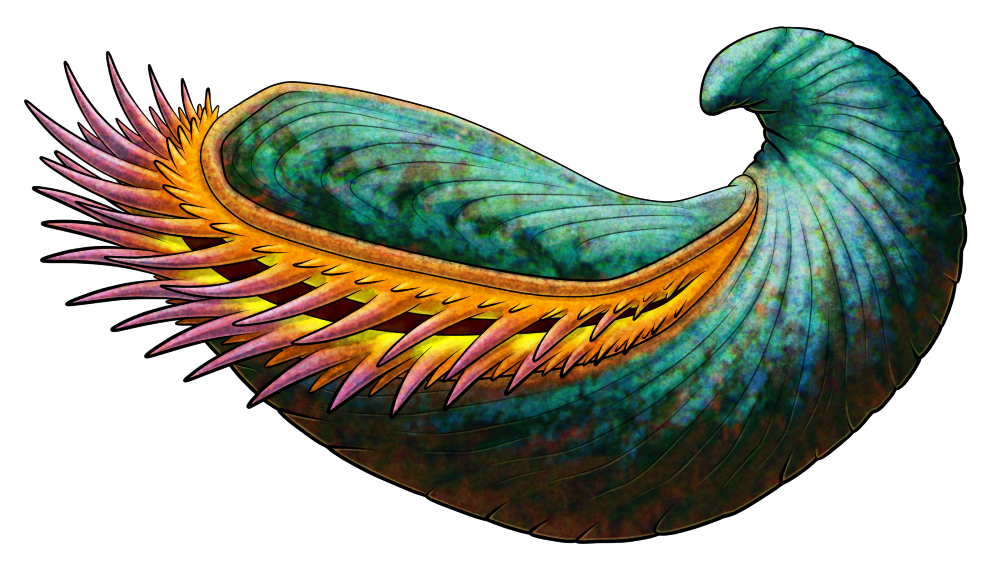The shells of bivalve molluscs are formed on the left and rights sides of their bodies, and so are usually roughly bilaterally symmetric.
But some bivalves break that arrangement, developing asymmetrical valves that can be massively different in size and shape.
Gryphaea arcuata was an oyster that lived during the Early Jurassic, about 200-174 million years ago, in the warm shallow seas that covered what is now Europe and eastern Greenland. Around 6cm long (~2.4″), its left valve was thick and strongly convex and curled, while the right valve was relatively thin and slightly concave forming a “lid”.
The gnarled curled claw-like shape of Gryphaea fossils led to them being colloquially known as “devil’s toenails” in some of the regions where they’re commonly found, with folk beliefs that they had the power to prevent joint pain.
Their shape was actually an adaptation to living on very soft seafloor sediments. The larger curled valve acted sort of like a boat on the soupy mud, supporting the Gryphaea‘s weight and preventing it from sinking.

